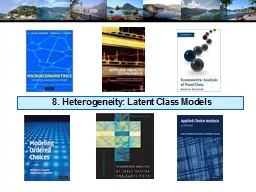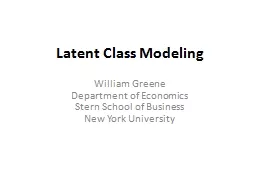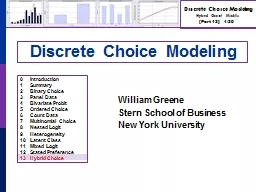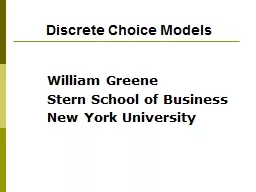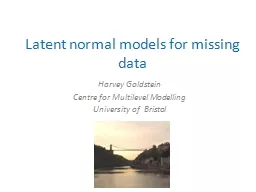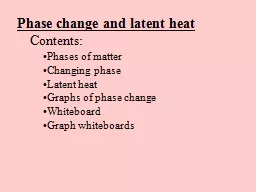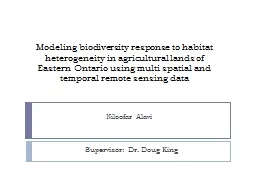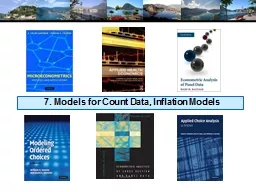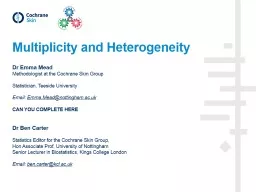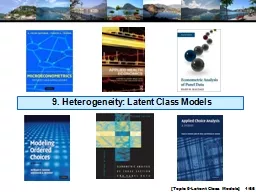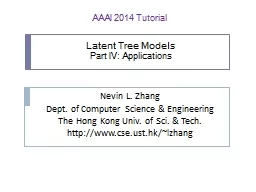PPT-8. Heterogeneity: Latent Class Models
Author : yoshiko-marsland | Published Date : 2016-05-21
Latent Classes A population contains a mixture of individuals of different types classes Common form of the data generating mechanism within the classes Observed
Presentation Embed Code
Download Presentation
Download Presentation The PPT/PDF document "8. Heterogeneity: Latent Class Models" is the property of its rightful owner. Permission is granted to download and print the materials on this website for personal, non-commercial use only, and to display it on your personal computer provided you do not modify the materials and that you retain all copyright notices contained in the materials. By downloading content from our website, you accept the terms of this agreement.
8. Heterogeneity: Latent Class Models: Transcript
Download Rules Of Document
"8. Heterogeneity: Latent Class Models"The content belongs to its owner. You may download and print it for personal use, without modification, and keep all copyright notices. By downloading, you agree to these terms.
Related Documents

